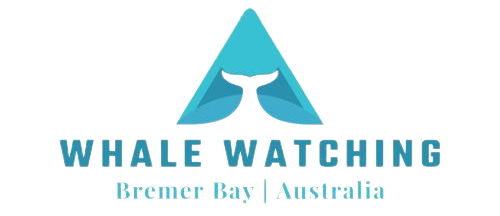Bremer Bay Whale Watching
Whale watching in Bremer Bay is often among the first activities that people plan when visiting this charming coastal town.
Nestled along the southern coast of Western Australia, this location is renowned for its endless sandy beaches, providing an optimal vantage point for an exceptional orca watching experience.
Bremer Bay’s pristine waters serve as both a vital feeding ground and a crucial point along the migratory path of these captivating marine animals. This distinctive combination of factors positions it as an ideal destination for an unforgettable orca tour in Bremer Bay.
If you’re getting ready for a trip to Bremer Bay, especially for an awesome whale watching experience, there are some important things you should know about the place and the cool things to see:
- When is the best season for whale watching in Bremer Bay?
- How do you ensure you select an orca tour that’s ethical and responsible?
- What steps should you take to get ready for the trip?
- How can you ensure capturing the finest photos and videos of the experience?
Within this guide, we’ll share key considerations for planning your expedition. So, read on and plan for an unforgettable whale watching adventure in Bremer Bay!
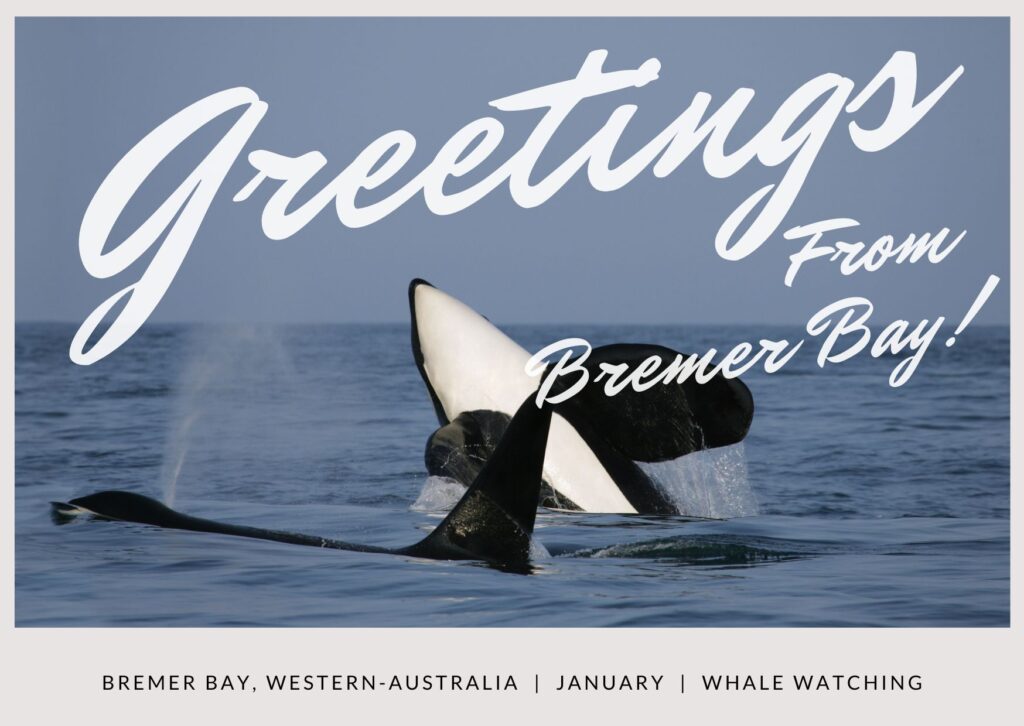
Best orca WATCHING TOUR in Bremer Bay
Bremer Bay Killer Whale Tour
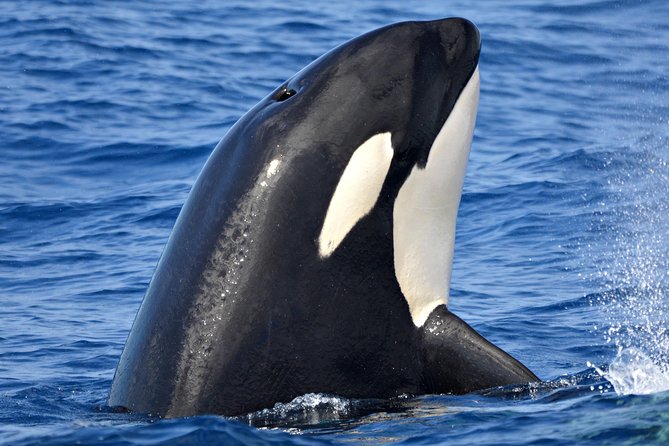
Embark on a 7-hour whale watching adventure from Bremer Bay Boat Harbor, a 2-hour drive from Albany, and witness the remarkable gathering of orcas in the Bremer Canyon.
Knowledgeable experts provide live commentary, while an underwater camera and hydrophone offer insights into the whales’ natural behaviors.
The Steep Point vessel boasts 5 viewing decks, ensuring unobstructed views and comfort, including a heated interior saloon and fully-licensed cafe. Experience exceptional service and a chance to be part of groundbreaking research in the Southern Hemisphere’s largest orca congregation.
Check AvailabilityAbout this activity
Highlights
– Whale watching trip from Bremer Bay Boat Harbor.
– Learn from experts through live commentary.
– Observe whales & dolphins in their natural habitat.
– Experience stunning views aboard a specialized luxury vessel.
Duration
– 7 hours (From Albany add 2 hours for driving)
Departure point
– Bremer Bay Boat Harbour, Western Australia
Live tour guide
– English
What’s included
– Lunch with complimentary beverages
– Unlimited tea, coffee and water
– Free postcard and photos of your experience
– Luxurious and warm inside seating lounge
What to bring
– Sunscreen and sunglasses
– Motion sickness medication (recommended)
– Camera
Whale Watching Season in Bremer Bay
The whale watching season in Bremer Bay takes place during two seasons, each with its own peak period. The best time to visit depends on the specific species you hope to see and when you plan to go whale watching.
Best time to see orcas Bremer Bay
From January to April is the best time to do an orca killer whales tours in Bremer Bay. The area is home to one of the largest gatherings of orcas in the southern hemisphere. This is a great time to see these elusive creatures, as well as other species such as sperm whales, pilot whales, and sunfish. These animals come to the area to feast on squid and pelagic fish species.
Best time to see Southern Right Whales and Humpback Whales in Bremer Bay
From July to October, Southern Right whales arrive in the sheltered waters around Bremer Bay to give birth. During these months, it is also possible to spot humpback whales during their migrations.
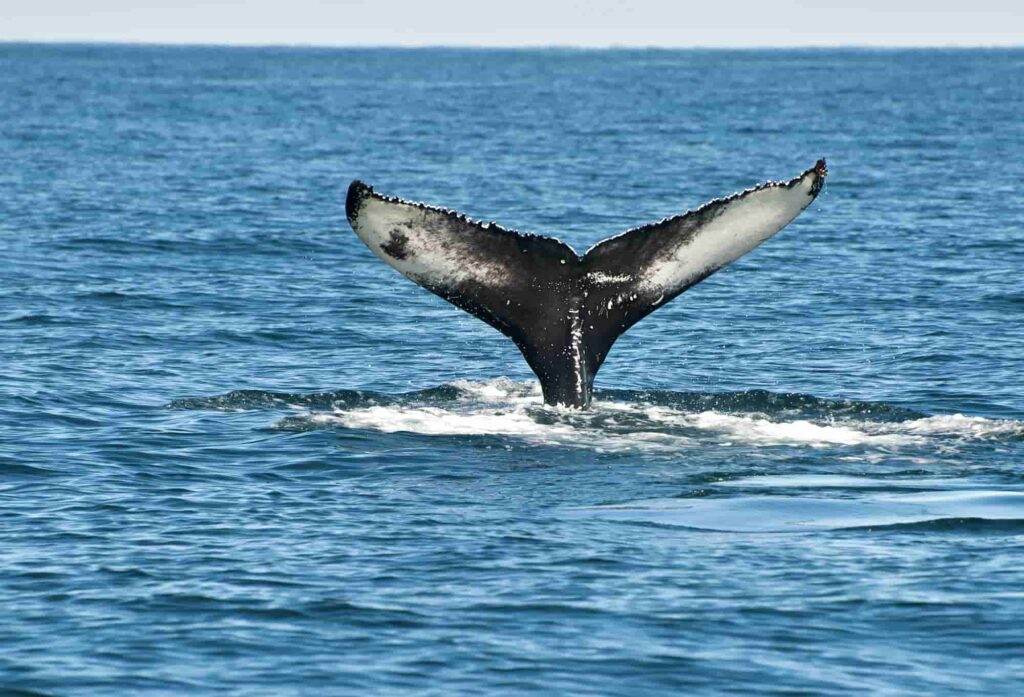
Whale Species in Bremer Bay
In addition to the southern right whales, humpback whales, and blue whales, there are several other species of whales and dolphins that can be found in Bremer Bay. These include the orcas, bottlenose dolphins, common dolphins, and pilot whales.
Is it allowed to swim with the orcas in Bremer Bay?
Swimming with whales and dolphins is not allowed in Bremer Bay or anywhere else in Australia. The Australian government has strict guidelines in place to protect both the whales and the humans who may encounter them. These guidelines include a code of conduct for whale watching, which prohibits any activities that may disturb or harm the whales.
What other marine wildlife can you see in Bremer Bay?
The Bremer Canyon is also a paradise for birdwatchers, with a wide variety of seabirds including albatross, shearwater, and petrel species often seen feeding on giant squid floating on the surface. Besides birds there are also various species of sharks that you can encounter such as great whites, whaler sharks, and the oceanic blue shark.
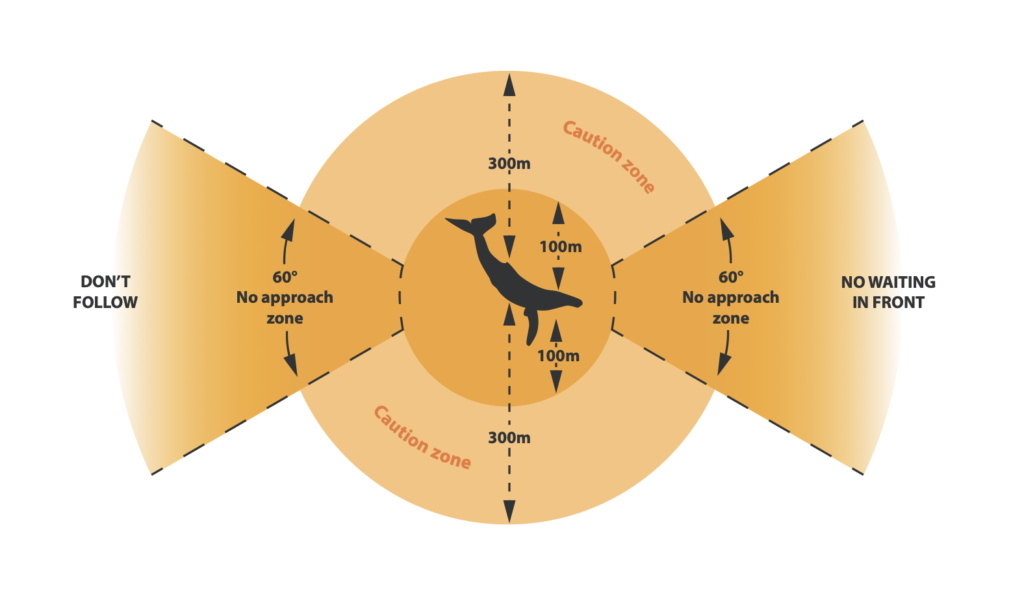
Code of conduct for whale watching in Australia explained
The Code of Conduct for Whale Watching in Australia is a set of guidelines designed to ensure the safety and well-being of both whales and humans during whale watching activities. The code was developed by the Australian Government in consultation with various stakeholders, including industry representatives, scientists, conservationists, and community groups.
It was established in 2017 and is regularly reviewed and updated to reflect the latest research and best practices in whale watching.
The code is intended to promote responsible and sustainable whale watching practices, with the goal of minimizing the potential for negative impacts on whales and their habitats. It includes guidelines on how to approach and observe whales, as well as rules on what activities are allowed and prohibited.
For example, it is not allowed to touch, feed, or swim with whales, and all activities must be conducted in a way that does not disturb the whales or their natural behaviors.
The code also provides recommendations on how to minimize noise and other potential impacts on whales, such as by avoiding areas where whales are known to be sensitive or by using appropriate vessel speeds and distances.
It also encourages the use of best practices for boat handling, such as avoiding sudden changes in speed or direction and minimizing the use of engines near whales.
Overall, the Code of Conduct for Whale Watching in Australia is an important tool for ensuring that whale watching activities are conducted in a responsible and sustainable manner, while also providing an enjoyable and educational experience for visitors.
Photography & video tips for whale watching in Bremer Bay
A whale watching trip can be an incredible opportunity to capture stunning photographs and video of these majestic creatures in their natural habitat. However, there are a few key tips to keep in mind to help ensure that you get the best possible shots during your trip.
- Plan ahead and do your research. It’s important to have a good understanding of the type of whales you might encounter on your trip, as well as the best times and locations to see them. Researching the best spots for whale watching and the behaviors of the different species can help you prepare for the best possible shots.
- Use a long lens. Whales are often quite far away from the boat, so it’s important to have a lens with a long focal length to help you get close-up shots. A telephoto lens with a focal length of 300mm or longer is ideal for capturing detailed images of whales.
- Pay attention to the light. The best light for photography is often found in the early morning or late afternoon, when the sun is low in the sky and casts a warm, golden light. Avoid shooting directly into the sun, as this can create harsh shadows and blown-out highlights. Instead, try to position yourself so that the light is coming from the side or behind you.
- Use a fast shutter speed. Whales are constantly moving, so it’s important to use a fast shutter speed to freeze the action. A shutter speed of at least 1/1000th of a second is recommended to help eliminate motion blur.
- Be patient. Whales are wild animals and can be unpredictable, so it’s important to be patient and wait for the right moment to capture the perfect shot. Don’t be afraid to spend some time just watching and observing the whales before attempting to photograph them.
- Don’t forget about the environment. In addition to capturing photos of the whales themselves, be sure to also photograph the surroundings and the environment in which they live. This can help to give context to your images and help tell the story of the whales and their habitat.
- Experiment with different angles and compositions. Try shooting from different angles and perspectives to add variety to your images. For example, you could try shooting from above or below the whales, or using a wide-angle lens to capture the entire scene.
- Use manual settings. In order to get the best possible shots, it’s important to have control over the camera settings. Try using manual mode and adjust the aperture, ISO, and shutter speed to suit the lighting conditions and the action of the whales.
- Shoot in RAW. Shooting in RAW format allows you to capture the maximum amount of detail and gives you more flexibility in post-processing. This is especially important when shooting in challenging lighting conditions, as it allows you to make adjustments to the exposure and white balance without degrading the image quality.
- Be mindful of your surroundings. Remember to respect the whales and their habitat, and follow the guidelines set by the whale watching tour operator. Stay a safe distance from the whales, and avoid making loud noises or disturbing them in any way.
By following these tips and using a bit of patience and creativity, you can capture stunning photographs and video of whales on your next whale watching trip.
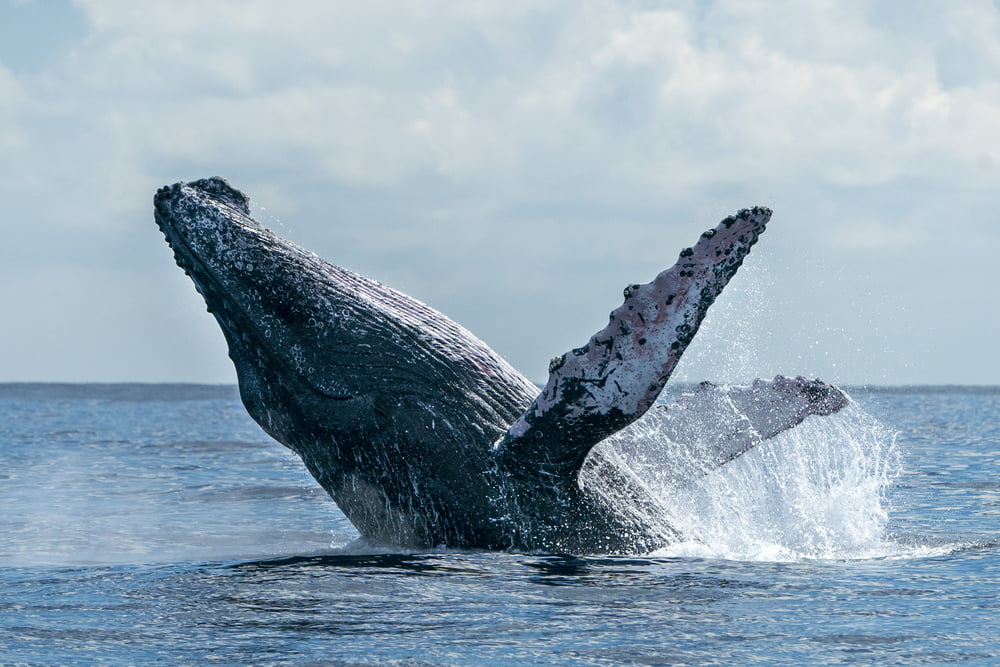
What are some of the other famous whale watching spots in Australia?
- Hervey Bay, Queensland: This Fraser Coast location is known for its calm waters and diverse marine life, making it a top destination for observing whales.
- Albany, Western Australia: This southern coast town is a hot spot for whale watching due to the large number of humpback whales that migrate through the area annually.
- Port Stephens, New South Wales: This eastern coast region is renowned for its beautiful beaches, abundant marine life, and opportunities to spot dolphins and whales.
- Eden, New South Wales: This picturesque town on the far south coast of New South Wales is a prime location for viewing southern right whales during their annual migration.
- Head of Bight, South Australia: Located on the Nullarbor Plain, this region is known for its stunning coastline and marine life, including a large population of southern right whales.
- Gold Coast, Queensland: Located in southeast Queensland, the Gold Coast is a popular spot for observing a variety of whale species, including humpback whales, minke whales, and killer whales.
- Sydney, New South Wales: With its rich marine life and beautiful beaches, Sydney is a top location for viewing humpback whales and other species such as minke whales and killer whales.
- Port Lincoln, South Australia: This southern coast town is renowned for its stunning coastline and diverse marine life, including southern right whales, humpback whales, and minke whales.
- Great Australian Bight, South Australia: With its rich marine life and stunning coastline, the Great Australian Bight is a popular spot for viewing southern right whales and other species such as humpback whales and minke whales.
- Warrnambool, Victoria: Located on the south coast of Victoria, Warrnambool is known for its beautiful beaches and diverse marine life, including southern right whales, humpback whales, and minke whales.
